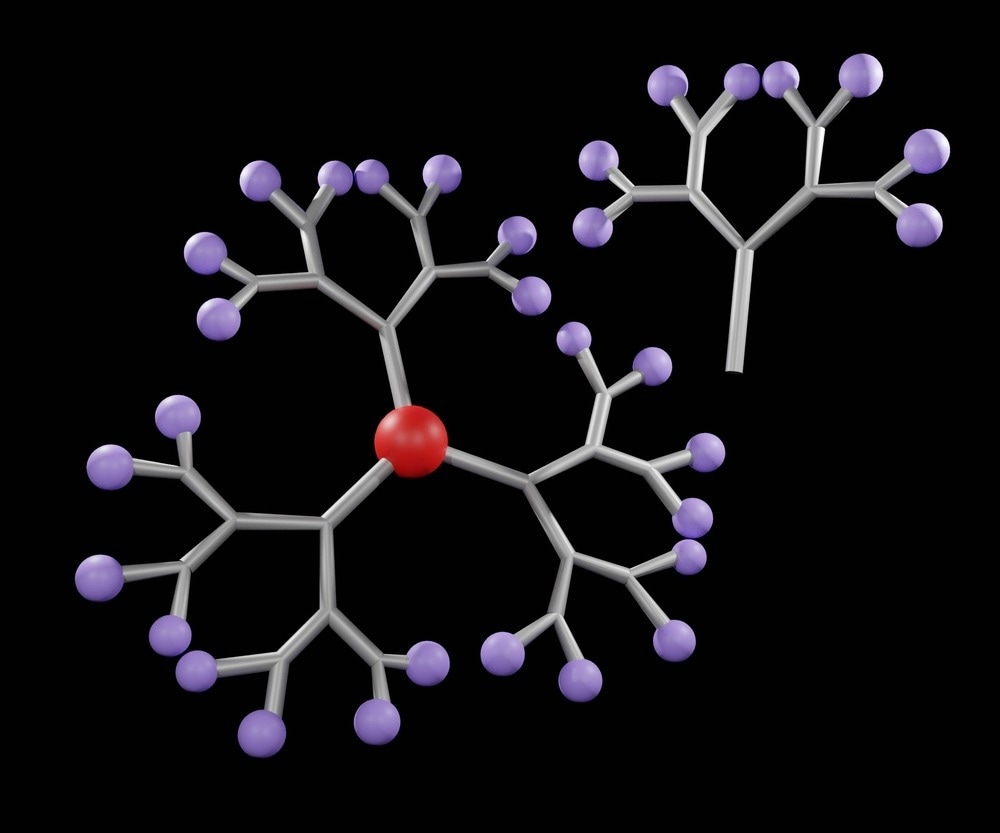Environmental concerns have focused the attention of researchers in various industries on developing biodegradable materials, especially polymers and plastics. This article will provide an overview of biodegradable polymers and their significance in biomedicine and biotechnology.

Image Credit: Love Employee/Shutterstock.com
What are Biodegradable Polymers?
Biodegradable polymers are a type of polymer that exists both naturally and can be synthesized in laboratories. This special class of polymer is broken down naturally by microbial processes to produce natural byproducts such as biomass, inorganic salts, CO2, N2, and water.
The action of degradation and the polymer’s properties depend upon its precise structure, with the main elements being amide, ether, and ester functional groups. Many examples of biodegradable polymers exist, as well as their numerous applications in several important industries.
Biodegradable polymers are synthesized by a number of reactions, including ring-opening polymerization and condensation reactions. Metal catalysts are often used in their synthesis.
Favorable properties include their non-toxicity, controlled rate of degradation, and good mechanical integrity (until degradation.)
The Significance of Biodegradable Polymers in Medicine and Biotechnology
The precise origin of biodegradable polymer use is difficult to identify as many of these materials exist in nature. However, one of the earliest uses of biodegradable polymers in medicine is the catgut suture, which has been traced back to the 2nd century CE. Modern catgut sutures are made from purified collagen.
A material, if it is to be considered suitable for medical and biotechnology applications, must be non-toxic and avoid eliciting an immune response by the host. This is essential as many biodegradable polymers have been developed for uses such as drug delivery and tissue engineering.
In drug delivery applications, one of the goals is to develop a system that provides controlled medication release over time in the patient. Furthermore, pills must be able to be stored and so need to be extremely stable. Once degraded, only non-toxic byproducts must be released into the body.
These materials are also used in regenerative medicine, tissue engineering, and orthopedic medicine.
Biodegradable and Bio-absorbable Polymers in Drug Delivery Systems
The growth in demand for biodegradable plastic and polymers has led to an estimated market size of $6.12 billion, according to Plastics Today. Arguably, these environmentally friendly materials are becoming one of the next big things in scientific research.
In the last two decades, research into polymeric drug delivery systems has evolved at a rapid rate. Many studies have concentrated on the use of natural polymers such as chitosan, poly(lactic acid), dextrin, and hyaluronic acid. Furthermore, synthetic biodegradable and bio-absorbable polymer research is accelerating.
Amongst the various biodegradable polymers studied for use as delivery components, hydrogels such as poly (glycolic acid) and poly (lactic acid) have shown particular promise for their bio-absorbability and non-toxicity. These materials can be used as safe frameworks for subcutaneous implants or deep drug delivery systems.
Whilst natural polymers such as chitosan and cellulose have been used for centuries, synthetic biodegradable and biocompatible variants possess better immunogenicity than their natural counterparts. This is extremely vital for drug delivery systems.
Modified biocompatible and biodegradable polymers are ideal choices where the implant or delivery system is only needed temporarily as they are absorbed by the body whilst releasing drugs in a controlled manner. The range of available natural and synthetic polymers is growing thanks to recent advances in research.
AI use has seen an explosion in recent years in several industries, and biomedicine and biotechnology are no different. By employing artificial intelligence and machine learning, scientists can accelerate the discovery of suitable biodegradable polymers and plastics for a multitude of key applications.
In Summary
In recent years, the need for targeted drug delivery systems has increased. Whilst traditional polymers are suitable for this critical biomedical application as elements such as cement, issues with biocompatibility and bio-absorbability has led to intense research on alternatives.
Natural biopolymers have been used for centuries as sutures, which has focused attention on their use for applications such as tissue engineering and controlled release drug delivery systems. Synthetic variants have emerged as forerunners in research in recent decades.
Synthetic biodegradable polymers and their natural counterparts have some key benefits over traditional varieties of polymer: they are non-toxic, degrade into harmless byproducts, and display excellent biocompatibility and a lack of immunological response by the patient.
Indeed, the many advantages of these biological materials have made them ideal targets for drug delivery research and development, where non-toxicity and reduced risk of immunological response is desired.
This area of research is a highly interesting one, with many innovative approaches being taken by scientists. Furthermore, the advent of AI and machine learning technologies is spurring the accelerated discovery of compatible biomaterials for this critical biomedical and biotechnological application.
Transforming Byproducts into Bioplastics: An Interview with KUORI's Founder
References and Further Reading
Sung, Y.K & Kim, S.W (2020) Recent advances in polymeric drug delivery systems Biomaterials Research 24:12 [online] biomaterialsres.biomedcentral.com. Available at:
https://biomaterialsres.biomedcentral.com/articles/10.1186/s40824-020-00190-7
Shah, R et al. (2020) Present and Future Trends in Biodegradable Polymers [online] Plastics Today. Available at:
https://www.plasticstoday.com/biopolymers/present-and-future-trends-biodegradable-polymers
Song, R et al. (2018) Current development of biodegradable polymeric materials for biomedical applications Drug Des Devel Ther. 12 pp. 3117-3145 [online] ncbi.nlm.nih.gov. Available at:
https://www.ncbi.nlm.nih.gov/pmc/articles/PMC6161720
Disclaimer: The views expressed here are those of the author expressed in their private capacity and do not necessarily represent the views of AZoM.com Limited T/A AZoNetwork the owner and operator of this website. This disclaimer forms part of the Terms and conditions of use of this website.